Pope Francis

Faced with a cultural landscape that’s shifting faster than the church’s ability to keep up, Catholic bishops are looking for new approaches toward unmarried couples, divorced people, and single parents who are disillusioned with the church.
The first-ever survey of 114 bishops’ conferences around the world found that many Christians “have difficulty” accepting church teachings on key issues such as birth control, divorce, homosexuality, and cohabitation.
But one senior church leader cautioned that “the doctrine of the church is not up for discussion.”
The survey’s findings, released in a 75-page document by the Vatican on Thursday, will serve as the blueprint for October’s Synod of Bishops, when bishops from around the world will gather to discuss issues facing the family.
The day before a newly-elected Pope Francis was to be formally installed at the Vatican in 2013, Cardinal Theodore McCarrick was celebrating Mass in St. Peter’s Basilica when he passed out at the altar and had to be rushed to the hospital.
It was a scary moment, and especially odd to see McCarrick stricken; even at 82, the energetic former archbishop of Washington always had a reputation as one of the most peripatetic churchmen in the Catholic hierarchy.
Doctors in Rome quickly diagnosed a heart problem – McCarrick would eventually get a pacemaker – and the cardinal was soon back at his guest room in the U.S. seminary in Rome when the phone rang. It was Francis. The two men had known each other for years, back when the Argentine pope was Cardinal Jorge Bergoglio, archbishop of Buenos Aires. McCarrick assured Francis that he was doing fine.
“I guess the Lord isn’t done with me yet,” he told the pope.
“Or the devil doesn’t have your accommodations ready!” Francis shot back with a laugh.
Top Catholic and Orthodox church officials in North America are calling on the Vatican to let married men become priests in Eastern rite Catholic churches, another sign that optional celibacy could become a front-burner issue under Pope Francis.
Like Eastern Orthodox churches, Eastern rite Catholics tend to have more local autonomy than their Roman Catholic counterparts, and they have particular liturgies and customs that date back to their origins in the Middle East and Eastern Europe.
One of those customs is optional celibacy. While Eastern rite Catholic bishops cannot be married, the priesthood is open to married men.
Pope Francis dived into the Middle East peace process on Sunday, urging the Israeli and Palestinian presidents to act with courage and end what he called the “spiral of hatred and violence” during a historic prayer meeting at the Vatican.
The Middle East leaders were joined by the Ecumenical Patriarch Bartholomew, spiritual leader of the world’s Eastern Orthodox Christians, and proceeded to the Vatican gardens for a tightly orchestrated 90-minute ceremony that was notable for the absence of any religious symbols.
Earlier, in St. Peter’s Square, a handful of protesters waved Palestinian flags in a bid to send a stronger political message to what the Vatican previously described as a “pause from politics.”
Political talk of moral obligation almost always invokes future children; it is not politically controversial to hope that our children and grandchildren will live on a safe planet. But the moral dimensions of climate change are far more complex and granular: food shortages here, extreme weather events there, floods that displace people in coastal regions, melting polar icecaps causing increased extinctions, the vulnerability of the global poor.
A moral vision able to see these granular risks comes, I would argue, not from time (Obama’s “future children” or the Pope’s “Creation will destroy us”), but from space.
Since 1946, the modern world has been able to view images of the earth from space. Some four millennia earlier, Hebrew scribes penned Genesis 1’s creation account of the whole known world. Ancient and modern, these are two portrayals of the earth, one to begin the Scriptures and one iconic of the modern space age — both spatial lenses offering moral vision about climate change.
Pope Francis has been working nonstop since his election more than a year ago, and he has shown remarkable resilience for a 77-year-old confronted with an array of church crises. But he is also fatigued at times and his advisers are hoping that he will take a break this summer.
“We have been asking him to have holidays this year,” Cardinal Oscar Rodriguez Maradiaga of Honduras told reporters during a visit to Washington this week. “Because last year he didn’t and sometimes he’s very tired.”
“So I think that during August he’s going to retire to rest,” said Maradiaga, who heads a kitchen cabinet of eight cardinals from around the world that Francis established as his top advisers.
SINCE HIS ELECTION as the 265th successor of St. Peter, Pope Francis has provided a refresher course on Catholic social teaching to the world’s 1.2 billion Catholics. “Catholic social teaching is no longer a secret,” says Jean Hill, director of peace and justice for the diocese of Salt Lake City. “Everything Pope Francis is saying comes from social doctrine and is about social justice.”
Through his various homilies, speeches, and meetings, Francis is “reading the signs of the times” and making practical application to the issues of the day. Some of his most powerful statements to date were made in his first pastoral document, “The Joy of the Gospel,” including this declaration: “I prefer a church which is bruised, hurting, and dirty because it has been out on the streets, rather than a church that is unhealthy from being confined and from clinging to its own security.”
Pope Francis is calling the faithful to be more merciful, compassionate, joyful, and centered upon the needs of the poor and vulnerable. He wants a church that sees the human person before the law and one that does not “obsess” about a narrow set of issues, but affirms both human life and human dignity. He invites Catholics to pray, reflect, and embrace the beauty and breadth of Catholic social teaching—a rich tradition that is predicated on the dignity of the human person.
The United States Conference of Catholic Bishops (USCCB) defines Catholic social teaching as “a central and essential element of our faith. Its roots are in the Hebrew prophets who announced God’s special love for the poor and called God’s people to a covenant of love and justice.” This teaching is also founded on the life and words of Jesus. It posits that “every human being is created in the image of God and redeemed by Jesus Christ, and therefore is invaluable and worthy of respect as a member of the human family.”
Recently I had the privilege of attending the Mass led by Pope Francis in Bethlehem’s Manger Square. I am not a Catholic – but like many who are not, I have been inspired and touched by Pope Francis. I do not know what is it exactly that draws me to him! Is it his humility? His compassion for the poor? His social justice concern? His true ecumenical spirit ? Maybe all of the above!
Back to Manger Square. It was truly a special day. There were Palestinian Christians from all over Palestine and Israel. There was a sense of euphoria in the air. I have never seen Bethlehem like this before. I have never in my life witnessed Palestinian Christians with so much joy and jubilation. People were excited. Nuns were dancing in the streets. There were hymns, flags, smiles. For few hours we forgot we were occupied.
However, the most iconic moment during the Pope’s visit to Bethlehem did not take place in the Manger Square, nor the Nativity Church. It took place next to the Separation Wall.
Pope Francis’ announcement this week that he would meet with victims of sexual abuse by priests is dividing victim advocates, with some dismissing the move as “meaningless” and others endorsing it as a positive step, albeit taken belatedly and under pressure.
“A welcome and overdue change,” said Anne Barrett Doyle of BishopAccountability.org, a prominent activist pushing the Catholic Church to overhaul its policies and practices on clergy abuse.
“Good to hear Pope Francis speak out and meet survivors,” tweeted Marie Collins, an abuse victim whom Francis named to a Vatican commission to promote reforms, on hearing that the pope compared clergy abuse to a priest celebrating a black Mass.
But others said Francis’ first-ever encounter with victims — and his pledge for “zero tolerance” for abusive clerics of any rank — was simply stagecraft aimed at distracting the public from what they say are the pope’s larger failures to address the abuse crisis.
Why is it so difficult for some people to respond to climate change in a thoughtful way? Sen. Marco Rubio says he doesn’t believe human activity is causing changes to the global climate. He told ABC News: “I do not believe that human activity is causing these dramatic changes to our climate the way these scientists are portraying it, and I do not believe that the laws that they propose we pass will do anything about it, except it will destroy our economy.”
But if Sen. Rubio believes that humans aren’t causing climate change, who does he believe is? Does he believe that climate change is natural, perhaps an act of God? The senator is a Christian , and he would be wise to listen to the words of a variety of religious leaders who have spoken about care for creation.
The visit of Pope Francis to Palestine, though initially intended to be a simple ecumenical meeting with the Patriarch of Constantinople, has turned into an enormous opportunity for His Holiness to reaffirm his commitment to peace and justice in a land that so desperately craves these things.
Francis’ visit is both timely and crucial. We Palestinians heard him clearly when he said: “We must restore hope to young people, help the old, be open to the future and spread love. Be poor among the poor. We need to include the excluded and preach peace.”
It sounds a little far-fetched and for some purists perhaps unthinkable: A pope, a rabbi, and a sheik decide to travel to the Holy Land and follow in the steps of Jesus.
The Argentina-born pope will be accompanied by colleagues Rabbi Abraham Skorka and Sheik Omar Abboud, both from Buenos Aires. It is the first time a pope’s official delegation has included members of other faiths on an overseas trip.
Pope Francis will be accompanied on his first visit to the Middle East by Argentine Rabbi Abraham Skorka and Muslim leader Omar Abboud — two friends from Buenos Aires.
“This dimension of interreligious dialogue has great significance,” the Vatican’s official spokesman, the Rev. Federico Lombardi, told the media.
Despite fevered speculation in the media and across Latin America, the Vatican says Pope Francis has not advanced slain Salvadoran Archbishop Oscar Romero toward sainthood — at least, not yet.
Pope John Paul II gave him the title “servant of God” in 1997 and the case for his canonization began. But the case stalled under the papacy of Benedict XVI over concerns that Romero was too close to the liberation theology that John Paul and Benedict spent years trying to repress.
Francis revived the cause soon after he was elected last year, and recent reports in several languages have suggested that church officials were poised to beatify Romero, putting him one step short of sainthood.
Spanish heartthrob Antonio Banderas may be cast in the role of Pope Francis in the first feature film to be made on the life of the Argentine pontiff.
Italian director Daniele Luchetti plans to make the $12 million Spanish language film, titled “Call Me Francesco,” with producer Pietro Valsecchi, who has made some of Italy’s highest-grossing movies.
Valsecchi’s Rome-based production house, Taodue Film, confirmed the news Wednesday, and a spokeswoman said the company was looking to shoot the film in various locations, including Argentina and Italy.
Banderas is one of the top Spanish-speaking actors being considered to play the lead role, she told Religion News Service.
When evangelicals and Catholics set aside centuries of mutual suspicion 20 years ago, the idea was fairly simple: Even if we can’t always work together, at least let’s not work against each other.
Now, two decades after the launch of the group Evangelicals and Catholics Together , relations between the two groups appear stronger than ever, forged by shared battles over abortion, same-sex marriage, religious freedom, and immigration.
A new pope is finding crossover appeal among evangelicals who share Pope Francis’ emphasis on evangelism and his distaste for the fancier trappings and authoritarianism of the papacy.
Catholic nuns in the U.S. have been thumbing their nose at Rome’s demands to toe the doctrinal line and they need to obey or face serious consequences, the Vatican’s enforcer of orthodoxy said in a surprisingly tough talk to women representing most American sisters.
Mueller said the LCWR — which represents about 80 percent of the more than 50,000 Catholic nuns in the U.S. – is dependent on the Vatican for its bona fides as a church body. He indicated that the group’s status, and the Catholic faith of the sisters, was at risk if they did not heed Rome’s directives.
The Vatican could face a wave of new sexual abuse claims dating back decades if a United Nations inquiry finds that the Roman Catholic Church has violated an international treaty against torture and inhuman treatment.
“For too long, sexual violence and acts of rape by the Catholic Church have been minimized,” said Katherine Gallagher, senior staff attorney at the New York-based CCR, after the U.N. panel that enforces the torture convention held hearings in Geneva.
The latest dust-up about the unscripted words of Pope Francis came this week when he tweeted, in Latin, “Inequality is the root of social evil.” Conservative Catholics had their underwear in a bundle, nervously tweeting away about the dangers of addressing complex issues on Twitter, and warning about thinking that “redistribution” would solve global inequities. Some feared this was giving Thomas Piketty’s new popular book, Capital in the Twenty-First Century, more press. Liberal Catholics were delightfully surprised, once again, and argued that the pope was doing nothing more than putting Catholic social teaching into a tweet.
Inequality is the root of social evil.
— Pope Francis (@Pontifex) April 28, 2014But this latest interchange, happening of course between Catholics in the global “North,” misses the real point.
Pope Francis and his council of eight cardinals are unlikely to complete a radical shakeup of the Holy See’s administration, or Curia, before 2015, the Vatican said Tuesday.
Francis joined the council’s discussions in between events on an intense appointment schedule that included an audience with King Juan Carlos of Spain after the historic double canonizations of Popes John Paul II and John XXIII on Sunday.
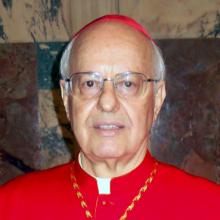
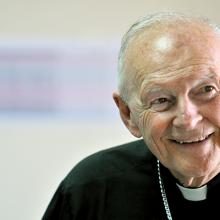
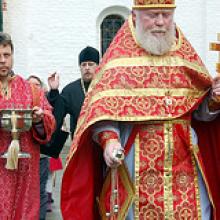
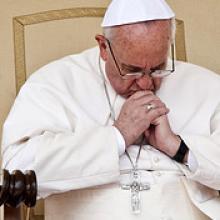
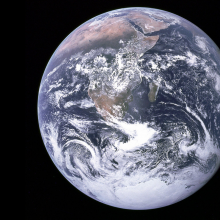
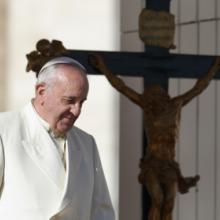
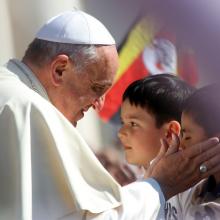
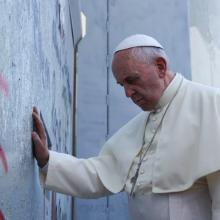
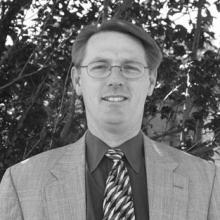
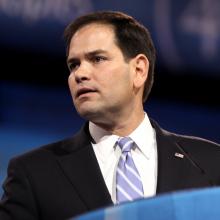
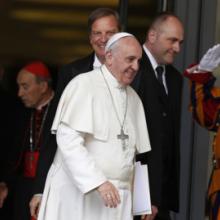
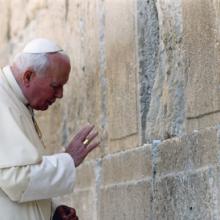
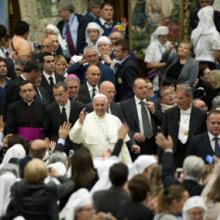
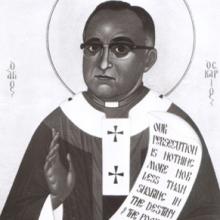
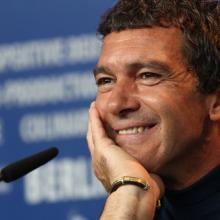
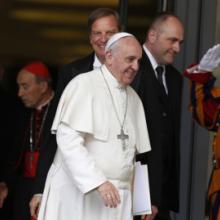
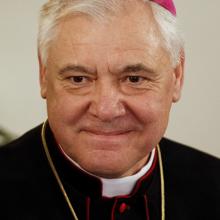

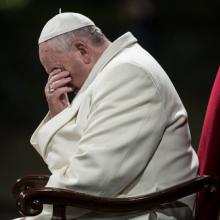
![Cardinal George Pell in Rome, 2007. Photo courtesy of Gavin Scott [Public domain], from Wikimedia Commons.](https://sojo.net/files/styles/medium_square/public/blog/Cardinal_George_Pell.jpg)